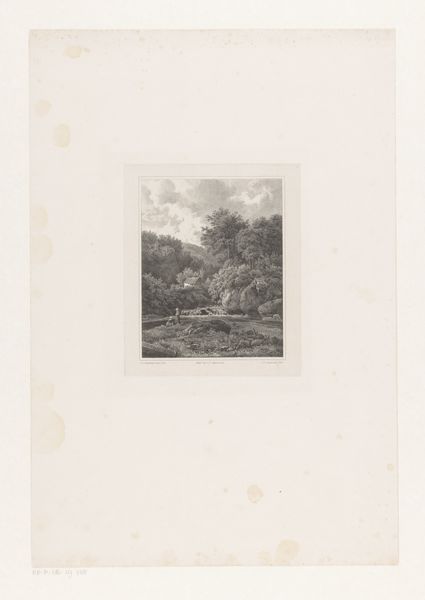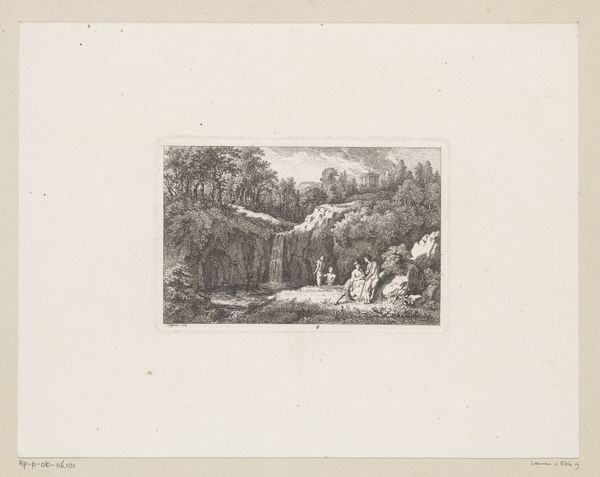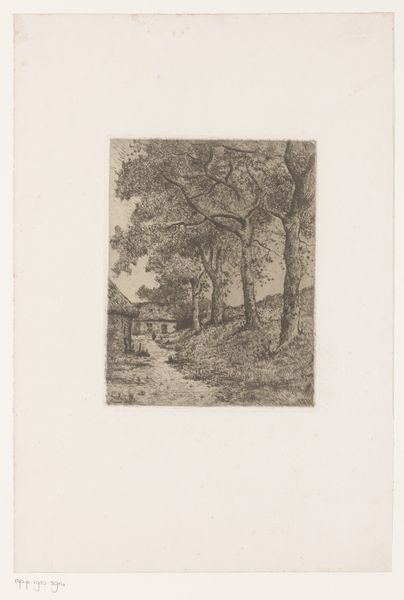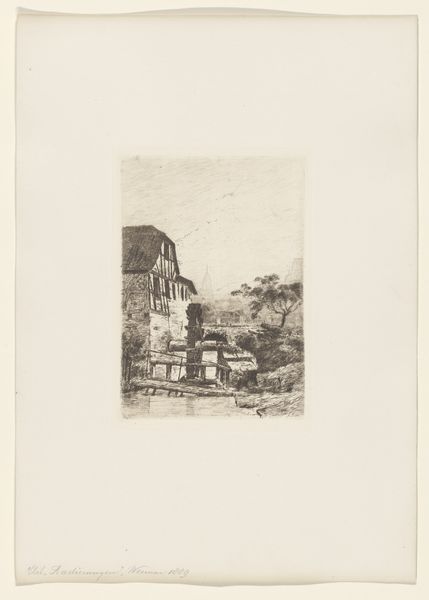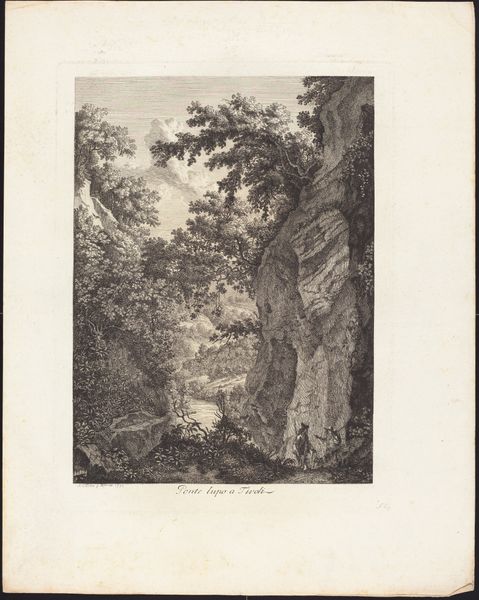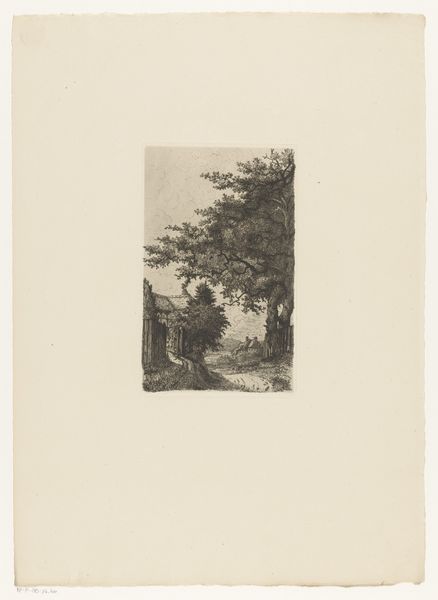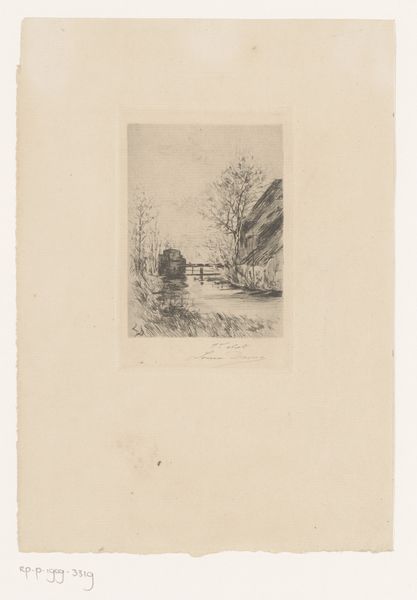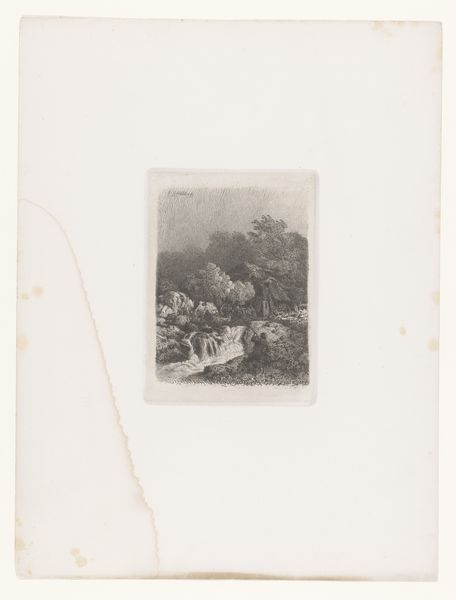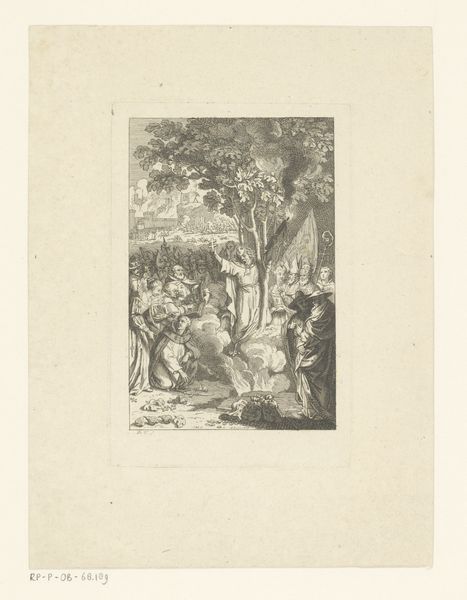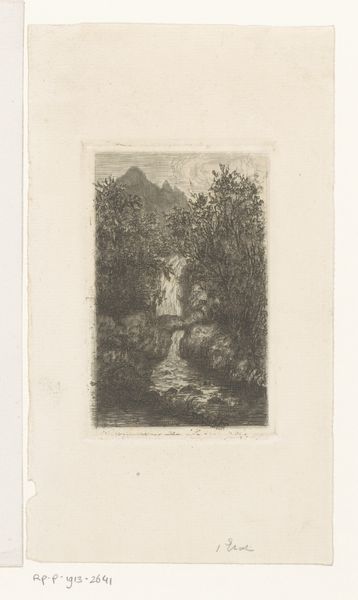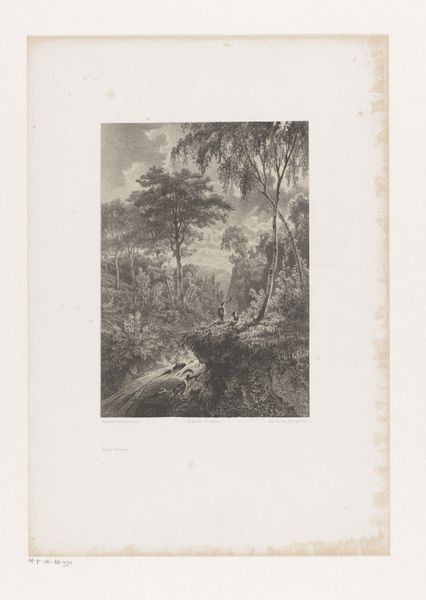
drawing, paper, graphite
#
drawing
#
narrative-art
#
landscape
#
paper
#
geometric
#
graphite
Dimensions: height 141 mm, width 114 mm
Copyright: Rijks Museum: Open Domain
Curator: Johan Gerard Sinia created this graphite drawing, titled "River with Rope Bridge," sometime between 1900 and 1910. Editor: There's a sense of precariousness and journey that immediately strikes me. The lone figure on the bridge seems almost dwarfed by the gorge and the somewhat unsteady bridge itself. Curator: Absolutely. Considering Sinia’s work in relation to colonialism, and its reliance on such bridges for resource extraction, there’s a tension present between the romantic depiction and the implied labor practices inherent in that infrastructure. How does the image further propagate colonial ideologies? Editor: The bridge, such a simple structure, becomes a powerful symbol. It speaks to the enduring human need to connect, to overcome obstacles both physical and, in a broader sense, metaphorical. Note the dark depths—the churning river beneath; it represents the untamed aspects of nature that humankind seeks to dominate or at least navigate. It has elements of the hero’s journey. Curator: The depiction also hints at ideas of mobility and access that would have been highly unevenly distributed. Whose movements were facilitated by this bridge, and for what purpose? We should look into that unequal power dynamic in Sinia's wider landscape drawings. Editor: But I also think about the ingenuity that went into building something like that – the collaborative effort. There is visual continuity from this period into today’s iconography, as well. Think of it like the Tower of Babel, or any engineering that makes civilization possible but risks corruption as its consequence. Curator: And how those feats are inevitably racialized and gendered. Colonial infrastructure always involved a reliance on coerced labor and expertise that weren't always recognized by the colonizer. We need to examine it through an intersectional lens to really get it. Editor: Absolutely. Thinking about it, it makes you see how charged the visual symbols could be even if subtly so, like how nature represents the potential for life as well as the threat of extinction, both feeding our collective unconsciousness with the visual metaphors of bridges and wild terrain. Curator: It forces us to rethink the common representation of exoticism by thinking about the power relations in colonialism. Editor: I agree. Visual communication opens many lines of cultural and philosophical inquiry for further examination.
Comments
No comments
Be the first to comment and join the conversation on the ultimate creative platform.
